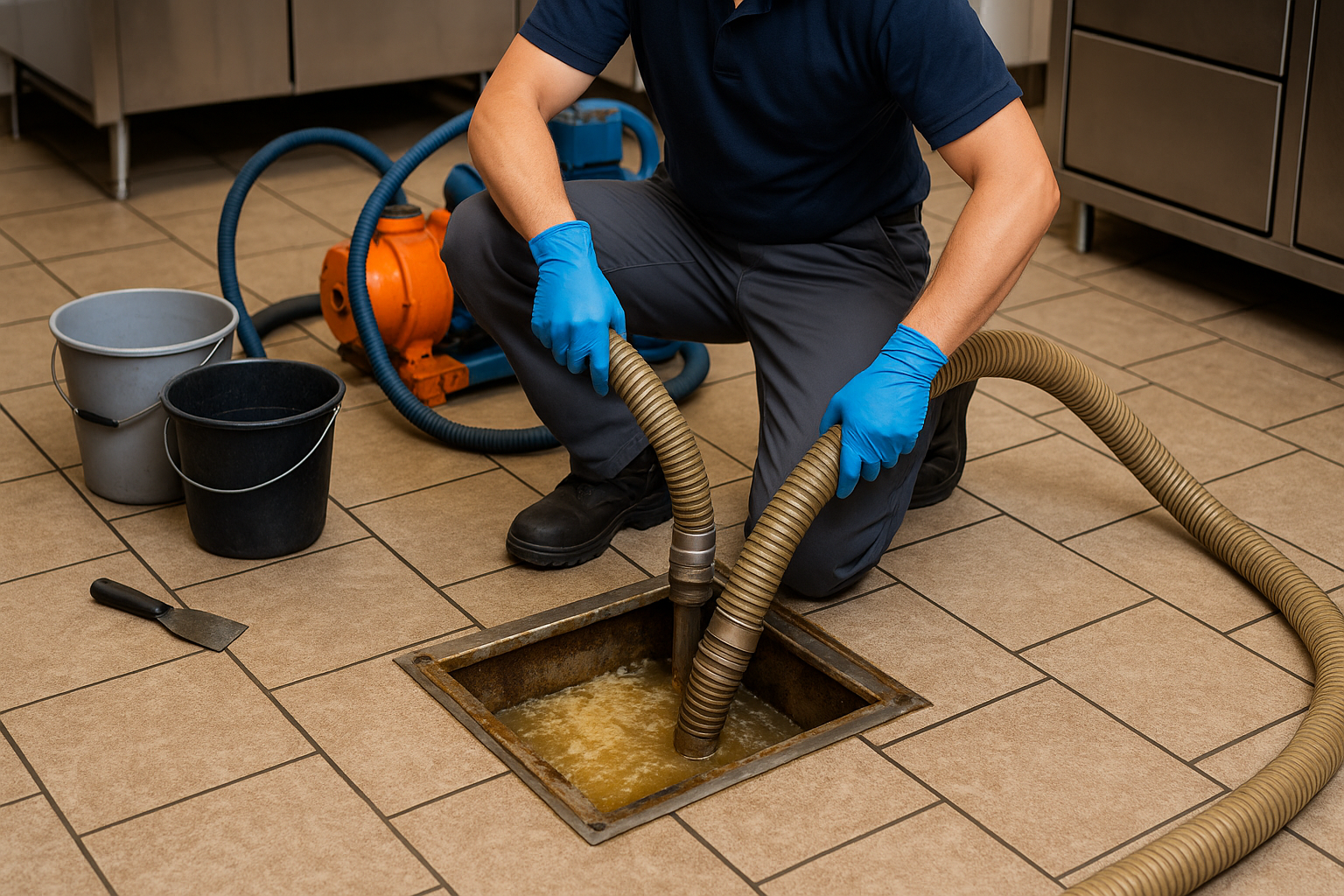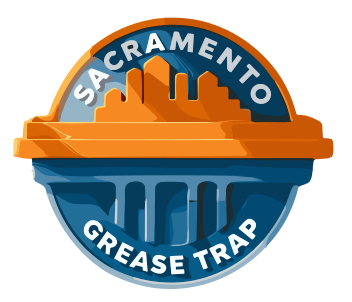What Is the Ideal Grease Trap Cleaning Frequency?

Ever had that moment in a busy kitchen where the sink starts draining slower than usual, and you can almost smell the problem before you see it? Chances are, your grease trap is overdue for a grease trap clean out. It’s one of those behind-the-scenes trap cleaning tasks that doesn’t get much attention—until it’s too late.
Cleaning grease traps regularly is essential for keeping your business running smoothly. Whether you’re running a restaurant, managing a food truck, or overseeing a large cafeteria, knowing your ideal grease trap cleaning frequency can prevent clogged sewer lines, foul odors, and costly repairs.
The truth is, there’s no one-size-fits-all answer. Your schedule depends on trap size, menu type, and how much fats, oils, and grease (FOG) you generate. But there are best practices you can follow to avoid plumbing disasters.
In this post, we’ll break down how to determine your cleaning frequency, explore industry recommendations, and share practical tips to keep your commercial grease trap in top shape—without unnecessary stress or expense.
Understanding the Role of Grease Traps in Commercial Kitchens
A grease trap system is designed to intercept fats, oils, and grease before they enter the main sewer line. Grease trap maintenance has been around for over a century, protecting municipal sewer systems from blockages.
Here’s how it works:
- Water from sinks flows into the trap.
- Grease, being lighter, floats to the top.
- Solids settle at the bottom.
- Cleaner water exits into the wastewater line.
Without proper grease trap cleaning services, grease trap issues such as foul odors, clogged pipes, and backups can occur. That’s why restaurant grease trap cleaning is often mandated under local regulations for the food service industry.
How to Determine Your Grease Trap Cleaning Frequency
When deciding on your grease trap service schedule, focus on prevention rather than reaction. Waiting until there’s a problem means you’re already late.
Key factors that affect grease trap cleaning for restaurants:
- Size of the trap – Smaller units need more frequent grease arrestor cleaning or grease pit cleaning.
- Menu type – Fried and greasy foods produce more FOG than lighter fare.
- Service volume – High-volume commercial kitchens need more frequent pumping services.
- Local regulations – Some cities mandate grease trap pumping services every 30, 60, or 90 days.
- The 25% Rule – If grease and solids occupy 25% of capacity, it’s time for a grease pumping service.
For example:
- A fried chicken restaurant might need grease trap pumping every 2 weeks.
- A hotel breakfast bar could stretch to 8 weeks between grease interceptor cleaning appointments.
If in doubt, search for a grease trap pumping service near me and consult with trained technicians.
The Benefits of Consistent Grease Trap Maintenance
Sticking to a regular maintenance schedule offers multiple benefits:
- Prevents costly repairs – Avoids damage to sewer lines and trap materials.
- Compliance – Stay aligned with local regulations for the food service industry.
- Hygiene – Controls odors and bacterial growth in commercial grease systems.
- Longevity – Extends the life of your trap and reduces the need for major repairs.
- Sustainability – Used cooking oil and grease can be recycled into biofuels.
Real-world example: A Sacramento diner adopted monthly commercial grease trap cleaning. For three years, they avoided any grease trap work emergencies and even turned their cooking oil waste into extra revenue.
Challenges in Grease Trap Cleaning
Even with the best grease trap cleaning commercial plan, challenges can arise:
- Downtime – Kitchen pauses during fat trap cleaning.
- Cost – Larger traps mean higher grease pumping expenses.
- Odors – Even during professional grease trap service, smells are inevitable.
- Paperwork – Many businesses must keep records of trap cleaning for inspections.
Pro tip: Partner with a reputable grease trap cleaning service and schedule during low-volume hours.
How to Implement an Effective Grease Trap Cleaning Schedule
Here’s a quick implementation plan:
- Check local regulations to determine the minimum cleaning grease traps frequency.
- Measure trap capacity and track fill rates.
- Start with a conservative schedule—better to over-clean than risk wastewater backups.
- Use the 25% rule as your trap cleaning trigger.
- Adjust based on performance and trap debris accumulation.
Helpful tools:
- Grease trap monitoring sensors
- Service scheduling apps
- Local FOG compliance programs
- Waste grease recycling partnerships
The Future of Grease Trap Services
Technology is shaping the grease trap service industry:
- Smart sensors for trap cleaning alerts.
- Expanded recycling for fats, oils, and grease.
- Stricter compliance checks for commercial grease handling.
For many businesses in the food service industry, adapting early to these trends means staying ahead of potential fines and ensuring flow in the main sewer line remains unobstructed.
Wrapping It All Up
The ideal grease trap cleaning frequency varies, but consistency is key. Following the 25% rule, maintaining regular maintenance, and working with licensed grease trap pumping services will keep your commercial kitchens compliant and efficient.
If you’re due for grease trap pumping or commercial grease trap cleaning, don’t wait—find a trusted grease trap service near me today.
FAQ: Grease Trap Cleaning & Maintenance
How often should a commercial kitchen clean its grease trap?
Most commercial grease trap cleaning is done every 30–90 days, but high-volume kitchens may require grease trap pumping every 2–4 weeks.
2. What happens if I skip grease trap maintenance?
You risk clogged pipes, foul odors, fines, and potential wastewater backups into your kitchen.
3. Can I clean a grease trap myself?
While cleaning grease traps manually is possible, it’s safer and more efficient to hire trained technicians for a professional grease pumping service.
4. What’s the difference between grease trap cleaning and grease interceptor cleaning?
Grease trap cleaning applies to smaller, under-sink units, while grease interceptor cleaning involves larger outdoor systems serving multiple fixtures.
5. How is used cooking oil handled after cleaning?
Used cooking oil can be recycled into biofuel or other products, reducing environmental impact.

Let Us Simplify Your Grease Trap Maintenance.
Proper grease trap maintenance will reduce costly repairs in the future.
.avif)

